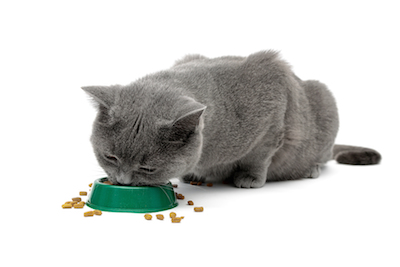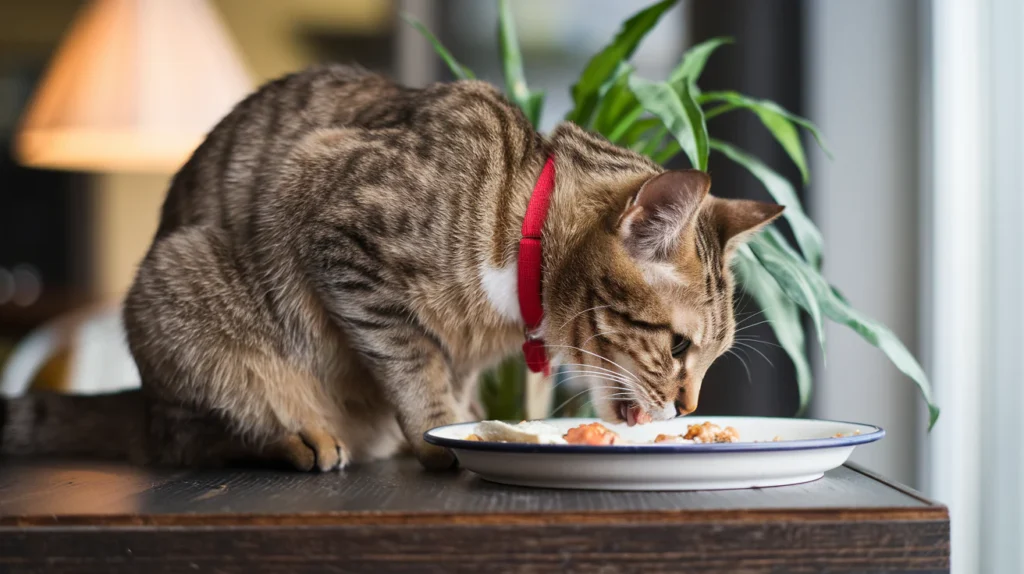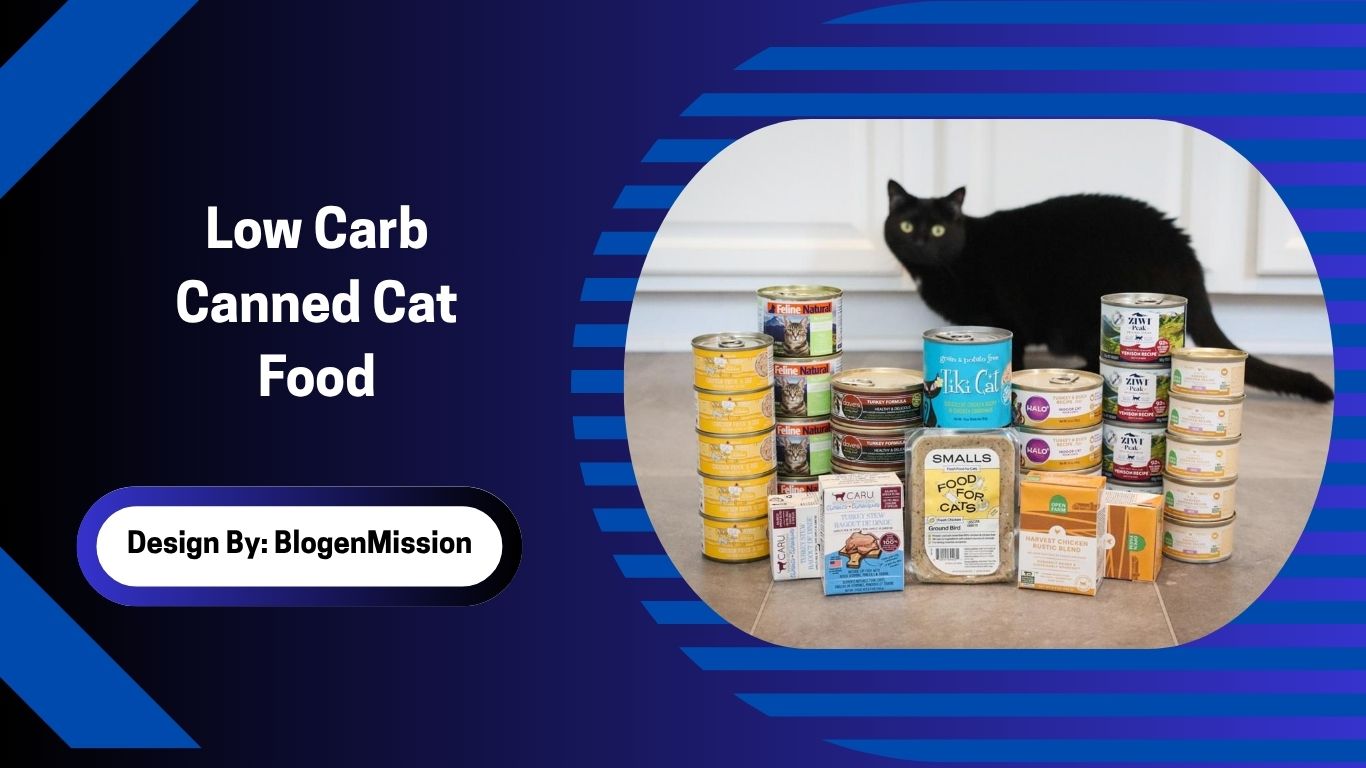Low carb canned cat food supports feline health with high protein, low carbs, and hydration. Ideal for weight loss, diabetes, and digestion, it mimics a cat’s natural diet.
As pet owners increasingly prioritize their cats’ health, low carb canned cat food has emerged as a popular choice for promoting feline health nutrition. Cats are obligate carnivores, meaning their bodies thrive on high-protein, low-carbohydrate diets that mimic their natural prey-based diet.
Unlike dry kibble, canned cat food offers higher moisture content and often aligns better with a low carb pet nutrition approach. This comprehensive guide explores the benefits of low carb cat food, key ingredients to look for, top low carb cat food brands, and tips for choosing the best wet cat food for your feline companion.
Why Choose Low Carb Canned Cat Food?
Cats require diets rich in animal-based proteins and fats, with minimal carbohydrates. Low carb wet food for cats supports various health needs, from weight management to managing chronic conditions like diabetes. Here’s why low carb cat food is a game-changer:
- Supports Feline Obesity Diet: Obesity is a growing concern among cats, with over 50% of U.S. cats classified as overweight, according to the Association for Pet Obesity Prevention. Cat food for weight loss often prioritizes low-carb formulations to reduce calorie intake while maintaining satiety.
- Aids in Diabetes Management: Diabetic cat food is typically low in carbohydrates to help regulate blood sugar levels. Studies show that low-carb diets can reduce insulin dependency in diabetic cats by up to 60% in some cases.
- Promotes Hydration: Wet food for cats contains 70-80% moisture, supporting urinary tract health and kidney function, especially in cats prone to dehydration.
- Mimics Natural Diet: High protein cat food aligns with a cat’s natural diet, providing essential amino acids like taurine for heart and eye health.
By choosing grain-free canned cat food or high protein wet cat food, you can address specific dietary needs while ensuring your cat enjoys a palatable, nutrient-dense meal.
Understanding Cat Nutrition and Low Carb Diets

Cat nutrition is rooted in their biological needs as carnivores. Unlike dogs or humans, cats have limited ability to process carbohydrates, as their digestive systems lack certain enzymes for efficient carb metabolism. A balanced cat diet should prioritize:
- High Meat Content: Look for high meat cat food with whole proteins like chicken, turkey, or fish as the first ingredient.
- Low Carbohydrates: Low carbohydrate pet food should contain less than 10% carbohydrates on a dry matter basis to qualify as low-carb.
- Healthy Fats: Fats provide energy and support skin and coat health.
- Minimal Fillers: Avoid foods with high-carb fillers like corn, wheat, or rice, which are common in lower-quality kibble.
Low glycemic cat food is especially beneficial for cats with diabetes or those prone to weight gain, as it minimizes blood sugar spikes. Natural cat food with minimal processing and artificial additives further enhances the quality of a feline diet.
Benefits of Grain-Free and Low Carb Wet Food for Cats
Grain-free cat food is often synonymous with low-carb diets, as grains like corn and wheat contribute significant carbohydrate content. Here are the key benefits of choosing grain-free canned cat food:
- Weight Management: Feline obesity diet plans often recommend low-carb foods to reduce calorie intake without sacrificing nutrition. For example, a 5.5-ounce can of low-carb wet food typically contains 100-150 calories, ideal for portion control.
- Improved Digestion: Cat food for sensitive stomach often excludes grains and fillers, reducing the risk of digestive upset or food sensitivities.
- Better Blood Sugar Control: Cat food for diabetes with low-carb formulations helps stabilize glucose levels, reducing the need for insulin in diabetic cats.
- Enhanced Palatability: Cats often prefer the texture and flavor of wet cat food, making it easier to transition to a healthy cat food diet.
Key Ingredients to Look for in Low Carb Canned Cat Food
When selecting premium cat food, scrutinize the cat food ingredients list to ensure it meets your cat’s nutritional needs. Here’s what to prioritize:
- Animal-Based Proteins: Chicken, turkey, salmon, or beef should be the primary ingredient. For example, high protein wet cat food should contain at least 40% protein on a dry matter basis.
- Low-Carb Vegetables: Some brands include low-carb veggies like pumpkin or peas for fiber without spiking carbs.
- Healthy Fats: Ingredients like fish oil or chicken fat provide omega-3 and omega-6 fatty acids for coat and joint health.
- No Artificial Additives: Avoid artificial colors, flavors, or preservatives that can harm long-term health.
- Taurine: Essential for heart and vision health, taurine is a must in any feline health nutrition plan.
Avoid products with high-carb fillers like potatoes, rice, or corn syrup, which can negate the benefits of a low carb pet nutrition diet.
Top Low Carb Cat Food Brands
Several brands excel in producing low carb cat food brands that prioritize quality and nutrition. Here are some top picks based on ingredient quality, carb content, and customer reviews:
- Tiki Cat After Dark
- Key Features: Grain-free, high-protein, low-carb (less than 5% carbs), meat-first ingredients.
- Best For: Cats needing a keto cat food or high meat cat food diet.
- Example Product: Tiki Cat After Dark Chicken & Quail Egg (2% carbs, 45% protein).
- Weruva Cats in the Kitchen
- Key Features: Grain-free, low-carb, high moisture content, human-grade ingredients.
- Best For: Cats with sensitive stomachs or picky eaters.
- Example Product: Weruva Funky Chunky Chicken (3% carbs, 40% protein).
- Instinct Original Grain-Free Pâté
- Key Features: High protein, grain-free, low-carb, natural ingredients.
- Best For: Cat food for weight loss or diabetic cat food.
- Example Product: Instinct Original Chicken Pâté (4% carbs, 42% protein).
- Wellness CORE Natural Grain-Free
- Key Features: High protein, low-carb, no artificial additives.
- Best For: Cats requiring a veterinary diet cat food for health conditions.
- Example Product: Wellness CORE Turkey & Duck Pâté (3% carbs, 43% protein).
- Fancy Feast Medleys Grain-Free
- Key Features: Affordable, low-carb, high moisture, widely available.
- Best For: Budget-conscious pet owners seeking healthy cat food.
- Example Product: Fancy Feast Medleys White Meat Chicken (5% carbs, 40% protein).
Always consult your veterinarian before switching to a low carb cat food brand, especially for cats with medical conditions like diabetes or obesity.
How to Transition to Low Carb Canned Cat Food?
Switching your cat to a low carb wet food for cats requires a gradual transition to avoid digestive issues. Follow these steps:
- Start Slowly: Mix 25% of the new low carb cat food with 75% of the current food for 3-4 days.
- Increase Gradually: Over 7-10 days, increase the proportion of new food (50/50, then 75/25) until fully transitioned.
- Monitor Health: Watch for signs of digestive upset, such as vomiting or diarrhea, and consult a vet if issues persist.
- Ensure Hydration: Wet cat food naturally boosts hydration, but always provide fresh water.
For picky eaters, try warming the canned cat food slightly or mixing in a small amount of tuna juice to enhance palatability.
Low Carb Cat Food for Specific Health Needs

Diabetic Cats
Cat food for diabetes should have minimal carbohydrates (ideally under 5%) to prevent blood sugar spikes. Brands like Tiki Cat and Purina Pro Plan Veterinary Diets DM are formulated specifically for diabetic cats, offering low glycemic cat food options.
Weight Management
For overweight cats, cat food for weight loss should combine low carbs with controlled calories. Look for feline obesity diet foods with high protein and fiber to promote satiety. Instinct Original and Wellness CORE are excellent choices.
Sensitive Stomachs
Cats with digestive issues benefit from cat food for sensitive stomach that avoids grains and fillers. Weruva and Fancy Feast Medleys offer gentle, low-carb options that are easy on the stomach.
Veterinary Diets
For cats with medical conditions, veterinary diet cat food prescribed by a vet may be necessary. These diets often align with low carb pet nutrition principles and are tailored to specific health needs.
DIY Low Carb Cat Food Recipes
For pet owners interested in homemade low carb cat food recipes, here’s a simple recipe to try (consult your vet first):
Chicken and Liver Low-Carb Pâté
Ingredients:
- 1 lb boneless chicken breast
- 2 oz chicken liver
- 1 tbsp fish oil
- 1 tsp taurine supplement
- 1/4 cup low-carb veggies (e.g., steamed pumpkin)
Instructions:
- Boil chicken and liver until fully cooked.
- Blend with fish oil, taurine, and veggies until smooth.
- Serve in small portions (1-2 oz per meal for an average 10-lb cat).
- Store in an airtight container in the fridge for up to 3 days.
This recipe provides a high protein cat food option with minimal carbs, ideal for a balanced cat diet.
FAQs
1. Why is low carb canned cat food better than dry kibble?
Low carb canned cat food offers higher moisture, mimicking a cat’s natural diet. It supports hydration, weight loss, and diabetes management, with fewer fillers than dry kibble.
2. Can low carb cat food prevent feline urinary issues?
Yes, low carb canned cat food’s high moisture content promotes hydration, reducing urinary tract infections and kidney issues. It supports overall urinary health in cats prone to these conditions.
3. How do I calculate carbs in canned cat food?
Check the guaranteed analysis on the label. Subtract protein, fat, moisture, and ash percentages from 100% to estimate carbs on a dry matter basis for accurate comparison.
4. Is low carb cat food safe for senior cats?
Low carb canned cat food can benefit senior cats, supporting weight and diabetes management. Consult a vet to ensure it meets specific health needs, like kidney function.
5. What’s the difference between grain-free and low carb cat food?
Grain-free cat food avoids grains but may include high-carb ingredients like potatoes. Low carb cat food specifically minimizes all carbohydrates, better aligning with a cat’s carnivorous diet.
Conclusion
Low carb canned cat food is a top choice for feline health, offering high protein, low carbs, and hydration to support weight management, diabetes control, and urinary health. By selecting quality brands or homemade recipes, pet owners can ensure their cats thrive on a natural, nutrient-dense diet. Always consult a veterinarian to tailor the diet to your cat’s needs, ensuring a happier, healthier life with the benefits of low carb wet food.
Related Post:
- Alternative To Pet Door – Pet Safety Solutions!
- What To Do With Pet Ashes – Honoring Your Pet’s Memory!
- Do Not Pet Dog Vest – Guide to Keeping Your Dog Safe!
- How Much Is Pet Cremation – Guide to Costs and Options!
- What To Do With A Dead Pet – Compassionate Guide!
